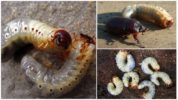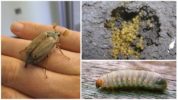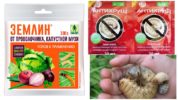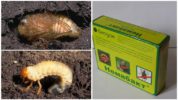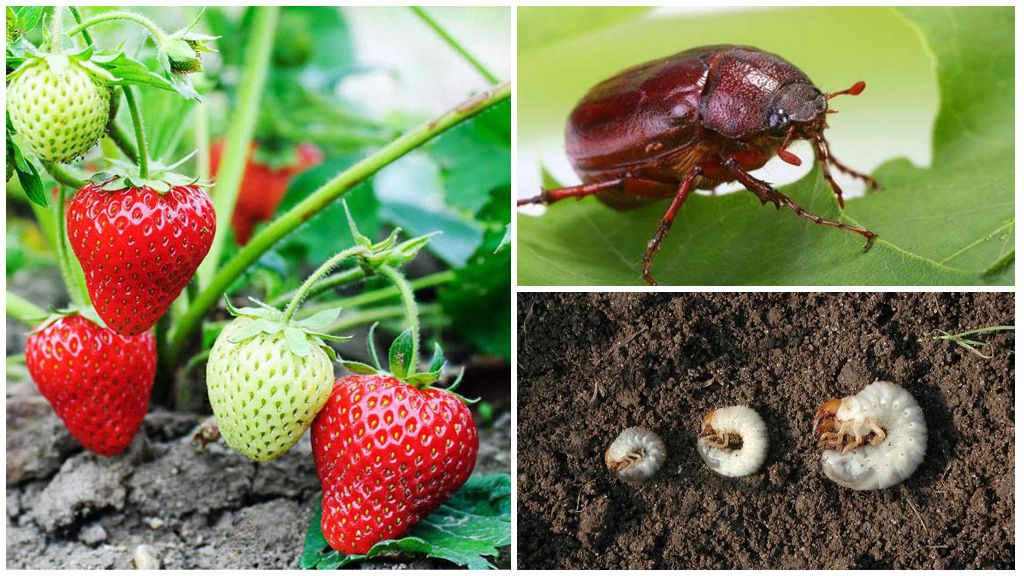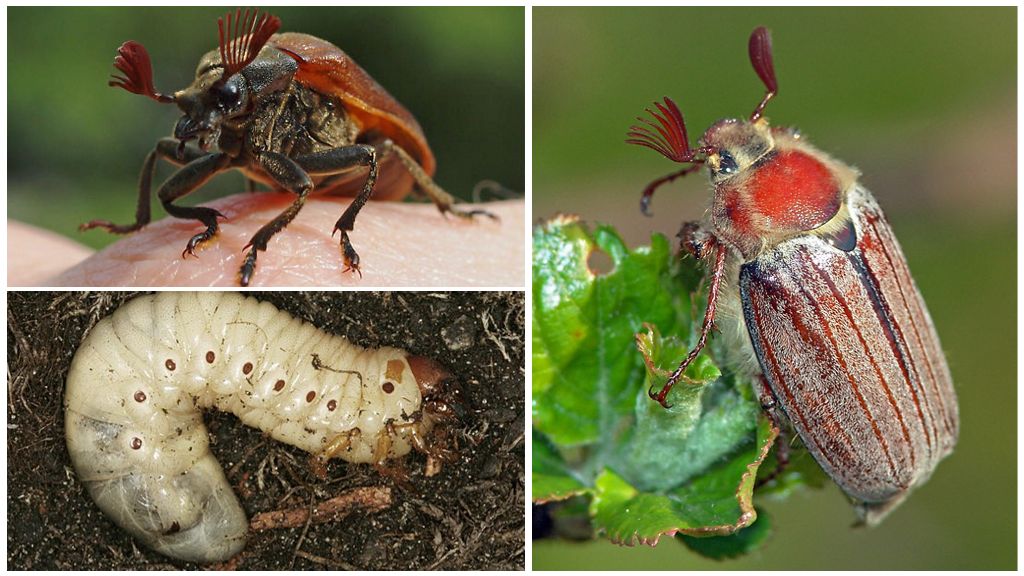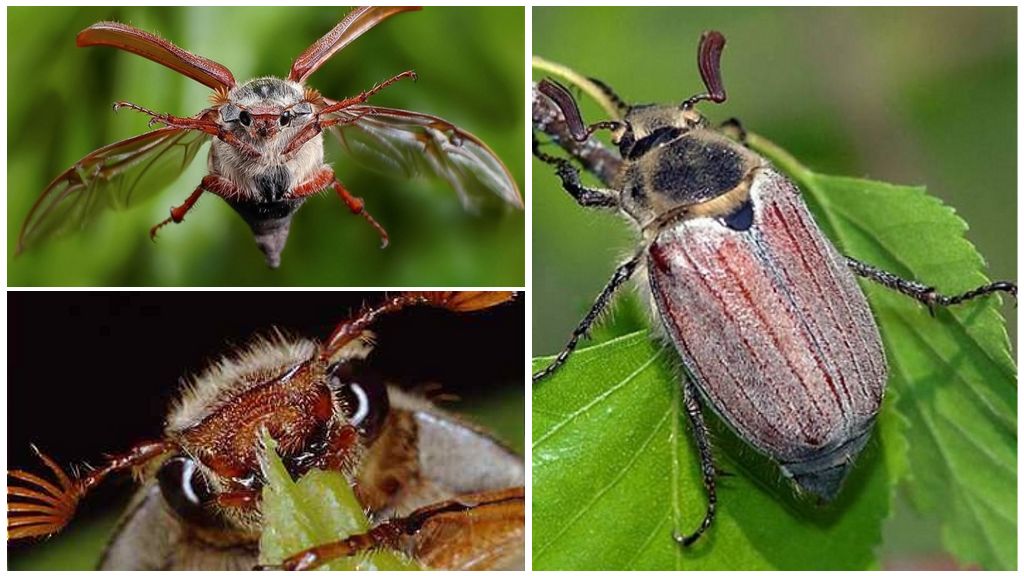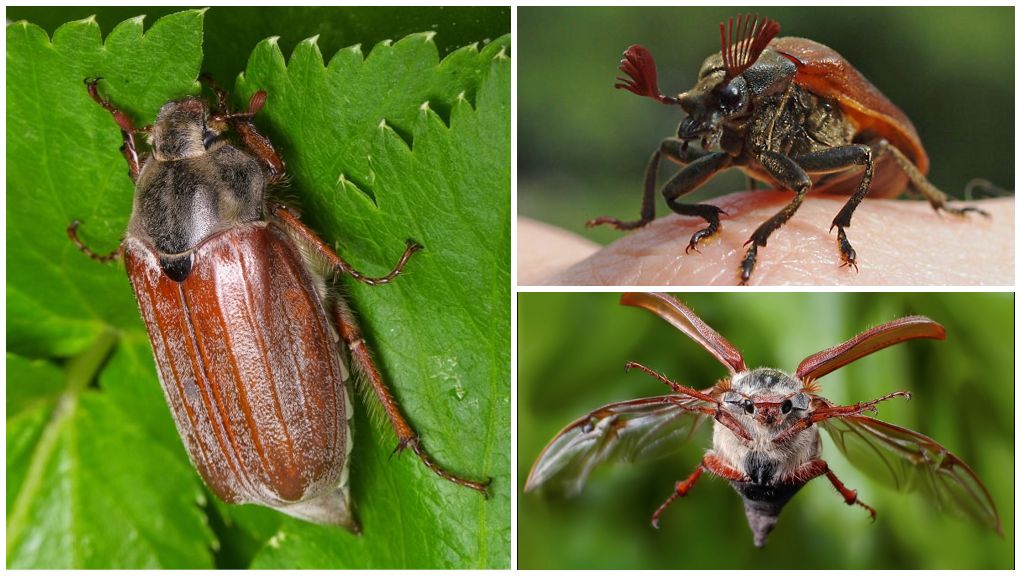- Maybug Larvae
- Beetle Eggs and Larvae
- Remedies against larvae
- Nemabact for combating the Khrushchev
In the spring, when many gardeners and gardeners are plowing and cultivating the land, you should pay attention to the presence of various insect larvae in the soil. In the future, they often turn into dangerous pests of the garden. How the larvae of the May beetle look and how to deal with them in order to prevent the emergence of adult individuals - this information will help reduce the number of pests on its site.
Appearance
When the first green appears on the trees, various garden pests also appear. It was during this period that the female successfully wintered in the ground cockchafer or the horsetail begins to lay eggs. She lays them very deep - almost a meter deep, which is why it is impossible to detect the masonry. Immediately after this, the females die, and after 20 days larvae begin to hatch from a large number of eggs (on average 100 pcs.) At a young age, they are almost harmless, but as they mature, they become formidable pests for horticultural crops.
On a note!
Outwardly, the Maybug larva looks like a thick white-yellow caterpillar with spots and rings on its sides. In size, they are no larger than small worms, but already in the 2nd year they have a length of 5 cm, and then grow to 6.5-7 cm.
Their characteristic feature is a ring-shaped C-shaped, but as they develop they increase in size, a brown head becomes visible, on which there are no eyes (they are not needed underground). They have 3 pairs of legs covered with hair and a gnawing mouth with brown jaws, as can be seen in the photo of the Maybug larva.
Main diet of larvae make up the roots of garden crops. Through the thin skin of the abdomen, you can see where her food is digested. As the size increases, the larva becomes more voracious and able to eat larger plant roots.
On a note!
Under the ground they are sometimes able to advance up to 100 m in length. As they develop, the larvae begin to creep up and try to get to the surface of the earth.
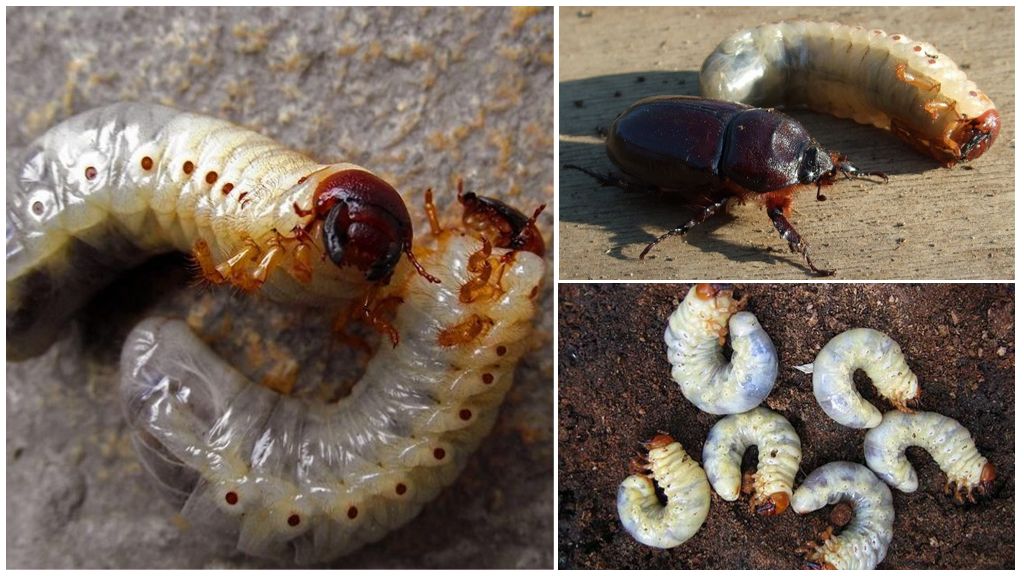
How much the larva grows and the damage done
The development process of the May beetle larva is very long - it lives underground for about 4 years, then pupates at a depth of 30-50 cm and turns into a beetle. This is the final stage of development, which usually occurs in late summer or the first month of autumn.
Young May beetles spend the winter in the ground, and when spring comes again they go out for mating and acquiring offspring. The weather is favorable for the number of beetles. Their active life lasts several years.
Any soil is suitable for life, however, it often prefers places where fresh manure has been introduced. Large individuals (4 to 7 cm long, which exceeds the size of the May beetle itself) can gnaw potato tubers, harm strawberry and berry bushes. From trees, larvae prefer to live under apple trees, pears and apricots. After damage to the root system, many leaves become sluggish and dry, the plant often dies.
Interesting!
According to the observations of biologists, a 3-year-old larva of the May beetle is able to eat all the roots of a young tree in a day.
Older larvae are capable of causing enormous damage to the crop, damaging the roots of garden and garden plantings. Therefore, it is so important to get rid of the May beetle larvae on time before they destroy the future crop.
Larva Fight
In order to determine effective measures to combat the larvae of May beetles, one should not only know their development process, but also taste preferences. Gluttonous creatures consume not only leaves, like adult adults, but also roots, flowers and other parts of plants.
From fruit trees and shrubs, they like to gnaw the roots and green mass of plums, cherries, sea buckthorn and black currant. The larvae of the May beetle in the garden feast on the roots of strawberries and even eat the roots of young lawn grass.
The fight against larvae of the May beetle should be complex, using various methods, especially with a large number of them.
The main methods:
- folk remedies;
- chemical and biological agents from the May beetle and its larvae.
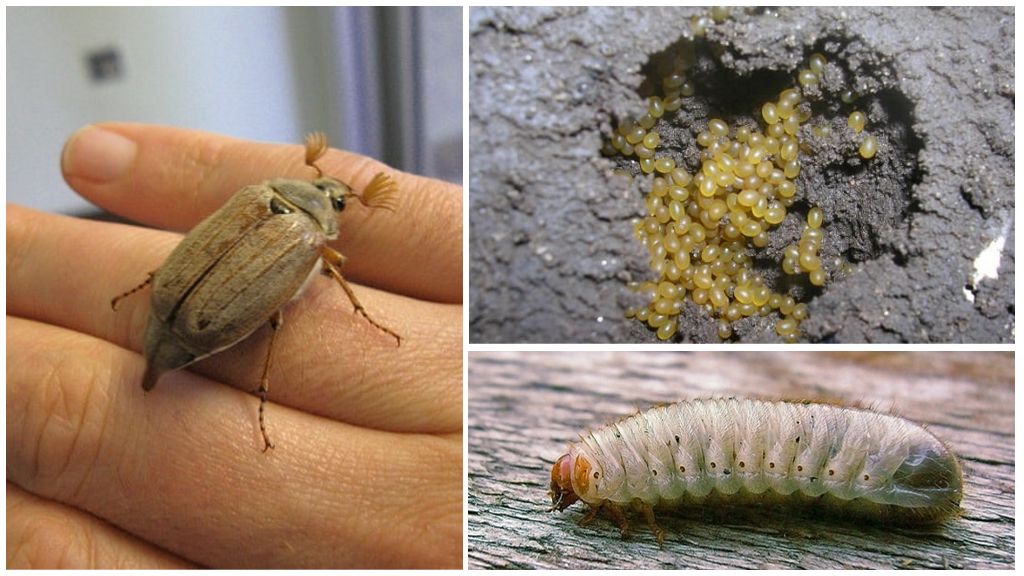
Folk methods of struggle
On warm days, the larvae rise higher to the surface, they can be easily detected with deep digging of the soil (about 20 cm in depth) and destroyed. The most famous grandfather's method involves manual collection during the digging of the land, for which they are collected in a separate container, and then burned.
On a note!
Often, the larvae of the horsetail are also found in the fallen foliage, which must be collected on time.
In the struggle, various folk recipes are also used:
- make a chlorine solution (100 g per 0.5 l of water) and cultivate the earth around the infected bush;
- insist onion husks (1/3 of a bucket of water) for 5 days, then dilute in a ratio of 1: 1, mix well and apply for regular watering during the period of plant growth;
- a solution with potassium permanganate is used to protect potato plantings, they need to spray the lower leaves;
- add 15 ml of ammonia to a bucket of water and use to water the beds with berry bushes.
Also, for watering the soil and destroying larvae of the May beetle in the ground, the following infusions and decoctions of herbs are used:
- wormwood tincture (stems and leaves are taken) is prepared from 300 g of dry grass, 200 g of wood ash in a bucket of water;
- take 1 kg of walnut leaves, pour 10 liters of boiling water and leave for a week;
- decoction of poplar leaves (insist 3 days);
- tincture of flowers and petals of a sunflower;
- infusion of their dried bark of white acacia (proportion 1:10).
On a note!
Many gardeners offer to fight in the garden with Khrushchev and its larvae using traps. For catching, they put plastic water bottles in which they put an insect bait. Climbing into it, the bugs will no longer be able to get out.
Chemicals
The most effective, but unsafe method of how to deal with the Maybug larvae is the use of special chemicals. These drugs are used to treat the root system of seedlings and other planting material (bulbs, tubers, etc.). Their action is based on the penetration of poison into the intestines of insects through the underground parts of plants.
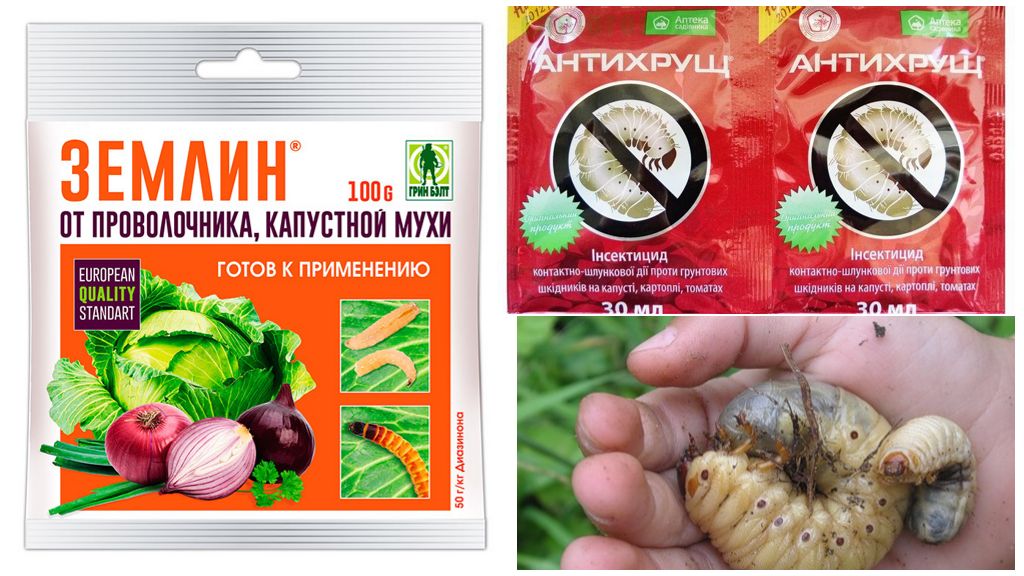
Preparations from Maybug larvae and their action:
- Antichrush - a concentrated suspension containing imidacloprid and bifentrin, after ingestion of pests negatively affects their nervous system, is used when watering the soil around plants;
- Zemlin - acts through the digestion and intestines of insects and larvae using the active substance diazinon;
- Aktara - the prepared solution is poured under the root of the plants to destroy the larvae;
- Initiative - added to the ground when sowing garden crops to poison underground pests;
- Nurell-D - the solution must be poured under the root, it is used for adult plants (shrubs and trees), penetrating moisture into the root system, and then the poison enters the larvae with food;
- Bazudin - added to the soil when planting, granules contain diazinon, kills pests by the contact-intestinal method after the poison enters through the roots and green parts of plants; however, poison should not be allowed into water bodies;
- Vallar - granules containing diazinon dissolved in water intended for irrigation; the poisonous substance penetrates the roots and cells of the plant and, after eating them with larvae, poisons them; You can also make a solution and dip the roots of plants before planting.
Subject to the precautionary measures and the recommendations specified in the instructions, all of the listed chemicals are not dangerous for plants, but they allow you to get rid of larvae living underground in the country or in the garden.
Biological products
On sale in specialized stores there are also proven biological products that are completely safe for plants and people, but allow you to get rid of grubs and their larvae in the garden.
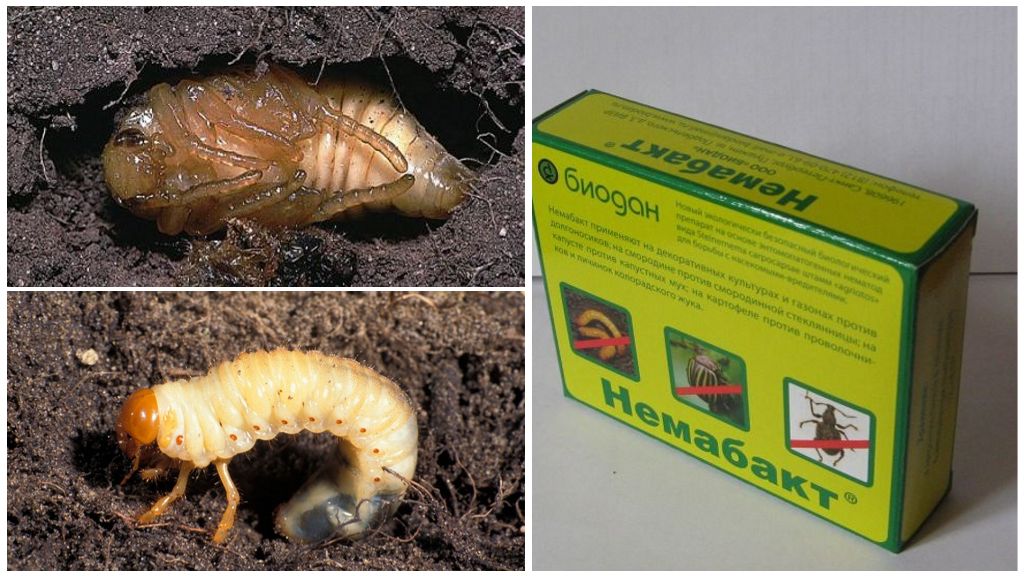
The drug Nemabakt was created using worms of nematodes, which, after they are introduced into the soil, actively attack May larvae. Within 1-3 days, their number will become much less, and then it will allow you to get rid of them forever. Worms populated in the soil maintain balance for 2 years.
It is used during watering the soil (morning and evening), it must first be diluted in a ratio of 1: 100, the optimal air temperature should be from +10 to + 26 ° C at high humidity.
The storage of nematodes is carried out in a special bio-soil, which is called Bio-shield. 5 liters of finished soil with nematodes are designed for processing 15 square meters. m of land in the garden. You can buy such a drug only in specialized stores and must be stored only under certain conditions specified in the instructions.
On a note!
Scientists have discovered an interesting feature of Khrushchev - they do not tolerate high levels of nitrogen in the soil. Therefore, for the purpose of prevention, you can apply the planting of white clover in the garden and in the garden in the tree trunk circles. In its root system, there are special bacteria that can absorb nitrogen from the air, and then accumulate it in the ground. Thus, there is an increase in the concentration of nitrogen in the soil.
Preventive measures
In order to prevent the appearance of the May beetle and its larvae on its garden plot, the following preventive measures should be taken:
- dig up the soil regularly regularly and then mulch;
- in the spring months, a layer of shredded tree bark, straw or shavings must be laid on top of the ground - they will prevent the laying of eggs by female beetles;
- make grooves between crops in the garden, spilling them with a solution of kalbofos;
- to plant cruciferous flowers, marigolds and lupins, near the plants, the smell of which always frightens off bugs and grit;
- planting fodder turnips along the perimeter of the bed, digging in cabbage leaves and green shoots of mustard - folk tricks that help scare away bugs;
- those involved in the breeding of poultry can use the larvae found for feeding.
The chafer is one of the most dangerous pests in the garden. Only an integrated approach, which provides for the use of both chemical agents for processing garden crops, and alternative methods for controlling and preventing the propagation of pests, will help get rid of adult grubs and their larvae.
